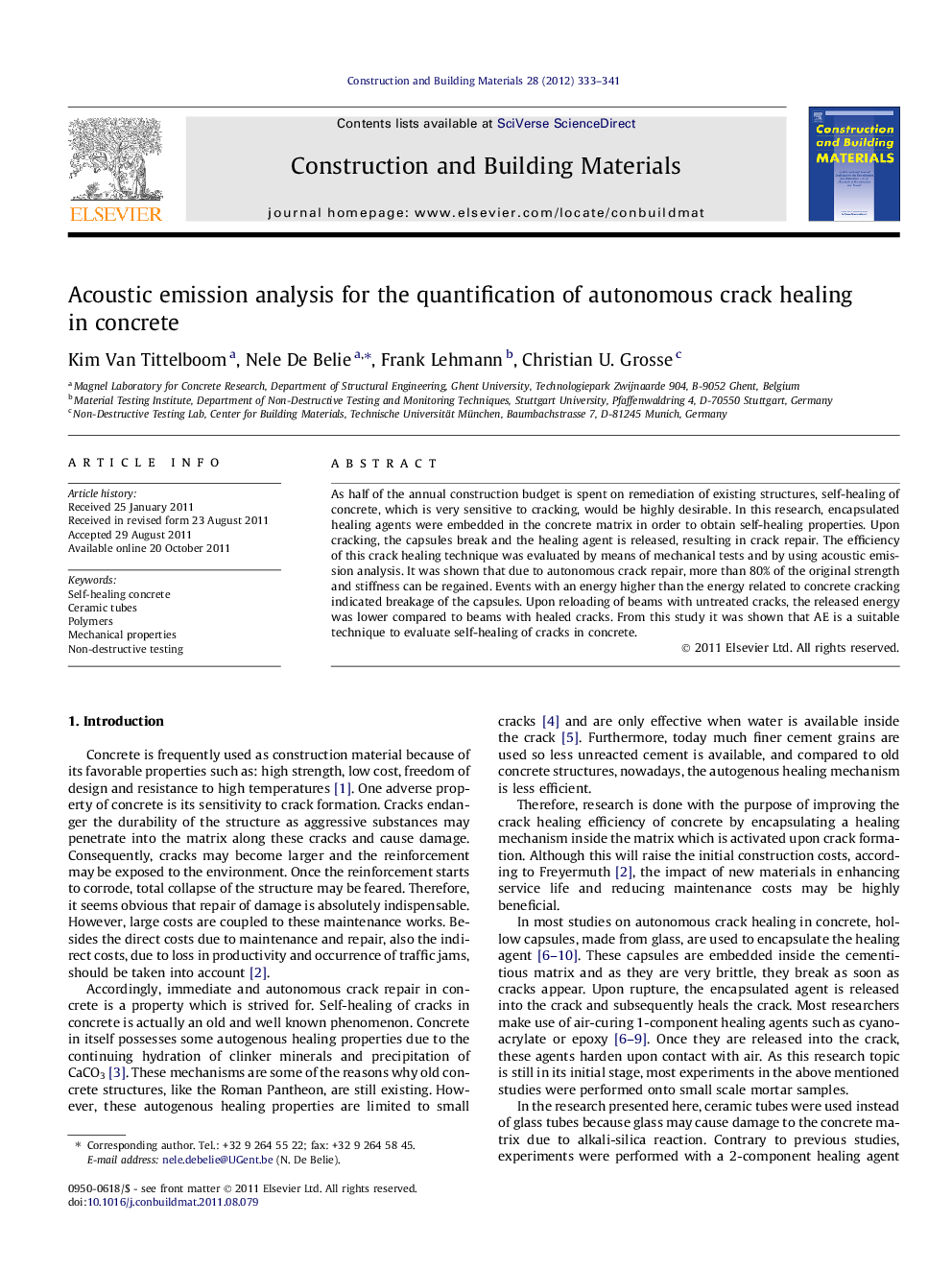| Article ID | Journal | Published Year | Pages | File Type |
|---|---|---|---|---|
| 259582 | Construction and Building Materials | 2012 | 9 Pages |
As half of the annual construction budget is spent on remediation of existing structures, self-healing of concrete, which is very sensitive to cracking, would be highly desirable. In this research, encapsulated healing agents were embedded in the concrete matrix in order to obtain self-healing properties. Upon cracking, the capsules break and the healing agent is released, resulting in crack repair. The efficiency of this crack healing technique was evaluated by means of mechanical tests and by using acoustic emission analysis. It was shown that due to autonomous crack repair, more than 80% of the original strength and stiffness can be regained. Events with an energy higher than the energy related to concrete cracking indicated breakage of the capsules. Upon reloading of beams with untreated cracks, the released energy was lower compared to beams with healed cracks. From this study it was shown that AE is a suitable technique to evaluate self-healing of cracks in concrete.
► It was proven that ceramic tubes filled with polyurethane can be used to heal concrete cracks autonomously. ► Due to self-healing, regain in strength and stiffness was obtained. ► Acoustic emission analysis was successfully used to study the crack healing efficiency. ► Breakage of the tubular capsules was proven by means of AE measurements. ► AE proved that additional tubes broke upon reloading and thus a second healing action may occur.
